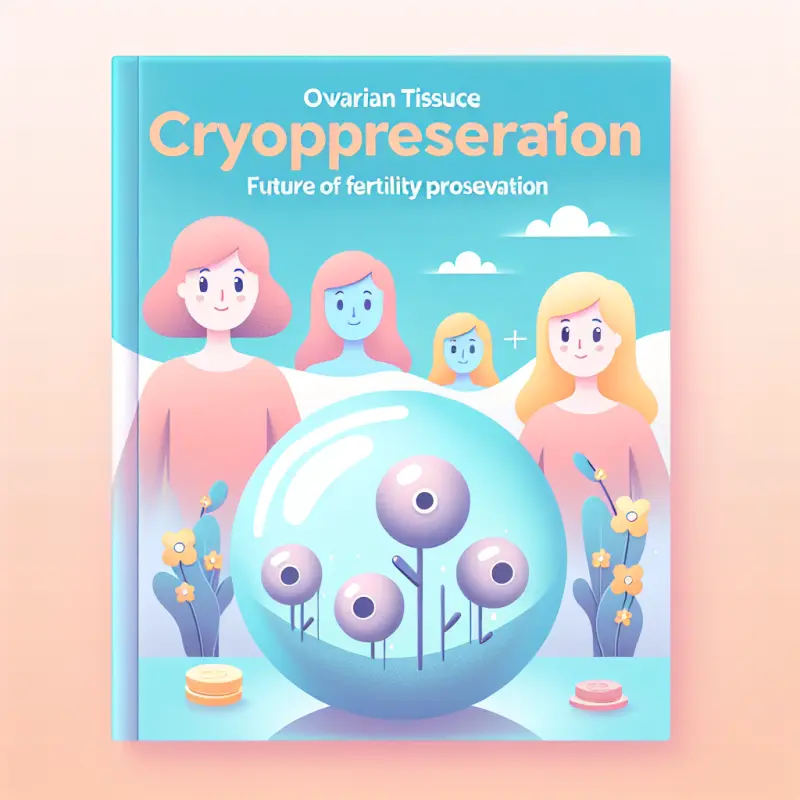Ovarian Tissue Cryopreservation: Future of Fertility Preservation

Ovarian Tissue Cryopreservation: Future of Fertility Preservation
In recent years, fertility preservation has become a crucial aspect of reproductive medicine, offering hope to many individuals who are at risk of losing their reproductive potential. Among the various options available, ovarian tissue cryopreservation (OTC) has emerged as a promising technique. This article delves into the intricacies of OTC, exploring its significance, methodology, current status, and potential future developments.
Introduction
Fertility preservation is a burgeoning field that addresses the needs of individuals who may face infertility due to medical treatments, aging, or lifestyle choices. The ability to preserve fertility is particularly important for cancer patients undergoing chemotherapy or radiation, which can severely impact reproductive organs. While traditional methods such as embryo or oocyte cryopreservation are well-established, they may not be suitable for prepubescent girls or individuals who cannot delay treatment. Ovarian tissue cryopreservation offers a unique solution by preserving a portion of the ovarian cortex containing primordial follicles, which can later be reimplanted to restore fertility.
Understanding Ovarian Tissue Cryopreservation
What is Ovarian Tissue Cryopreservation?
Ovarian tissue cryopreservation involves the surgical removal, freezing, and storage of ovarian tissue. This tissue can later be thawed and reimplanted to restore ovarian function and fertility. The procedure holds promise for preserving fertility in women who cannot delay cancer treatment and for prepubescent girls who cannot produce mature eggs.
Historical Background
- 1930s: Initial concepts of freezing reproductive tissue were explored.
- 1996: First live birth from frozen-thawed ovarian tissue was reported in sheep.
- 2004: First successful human live birth from cryopreserved ovarian tissue.
Indications for OTC
OTC is primarily indicated for:
- Cancer Patients: Particularly those undergoing gonadotoxic treatments.
- Genetic Conditions: Conditions like Turner syndrome where ovarian failure is anticipated.
- Autoimmune Disorders: Treatments that may compromise fertility.
- Others: Situations where other fertility preservation methods are not feasible.
The Procedure: Steps Involved in Ovarian Tissue Cryopreservation
Preoperative Assessment
- Patient Counseling: Discussing options, risks, and success rates.
- Medical Evaluation: Assessing the patient's health status and eligibility.
- Informed Consent: Obtaining consent after detailed information.
Surgical Procedure
- Laparoscopy: Minimally invasive surgery to remove ovarian cortex.
- Tissue Processing: Dissection of ovarian cortex into small strips or cubes.
Cryopreservation Techniques
- Slow Freezing: Gradual cooling of tissue to avoid ice crystal formation.
- Vitrification: Ultra-rapid freezing technique that prevents ice formation.
Storage
- Liquid Nitrogen Tanks: Long-term storage at -196°C.
Reimplantation
- Orthotopic Transplantation: Grafting tissue back to the pelvic cavity.
- Heterotopic Transplantation: Grafting to alternative locations like the forearm.
Current Status and Success Rates
Success Rates and Challenges
- Live Births: Over 130 live births reported worldwide.
- Challenges: Vascularization, follicle survival, and hormonal function restoration.
Recent Advances
- Improved Techniques: Innovations in cryopreservation and transplantation.
- Biomarkers: Identifying markers for successful transplantation.
Limitations
- Follicle Loss: Significant loss of follicles during freezing and thawing.
- Surgical Risks: Risks associated with laparoscopic surgery.
- Ethical Considerations: Consent and potential use of tissue.
Ethical and Legal Considerations
Ethical Concerns
- Consent: Particularly in minors and incapacitated individuals.
- Future Use: Decisions regarding the use of stored tissue.
Legal Framework
- Regulations: Varying laws regarding storage, ownership, and use of cryopreserved tissue.
- Patient Rights: Ensuring patients' autonomy and rights are respected.
Future Perspectives
Technological Innovations
- Artificial Ovaries: Development of bioengineered ovarian constructs.
- Gene Editing: Potential to enhance follicle viability and function.
Expanding Indications
- Age-related Fertility Preservation: Potential for women delaying childbearing.
- Non-Medical Reasons: Ethical implications of elective preservation.
Sociocultural Impact
- Awareness: Increasing awareness and acceptance of fertility preservation.
- Access: Ensuring equitable access to OTC across different demographics.
Conclusion
Ovarian tissue cryopreservation represents a groundbreaking advancement in fertility preservation. Its ability to provide hope for patients with limited options is unparalleled. While challenges remain, ongoing research and technological innovations promise to enhance the efficacy and accessibility of this technique. As the field evolves, ethical considerations and regulatory frameworks will play crucial roles in shaping its future. Overall, OTC stands at the forefront of fertility preservation, offering a beacon of hope for many on their reproductive journeys.
In summary, ovarian tissue cryopreservation is a dynamic and promising field that holds significant potential for the future of fertility preservation. With continued research, ethical vigilance, and technological advancements, this technique may soon become a standard option for individuals seeking to preserve their reproductive potential in the face of medical and non-medical challenges.